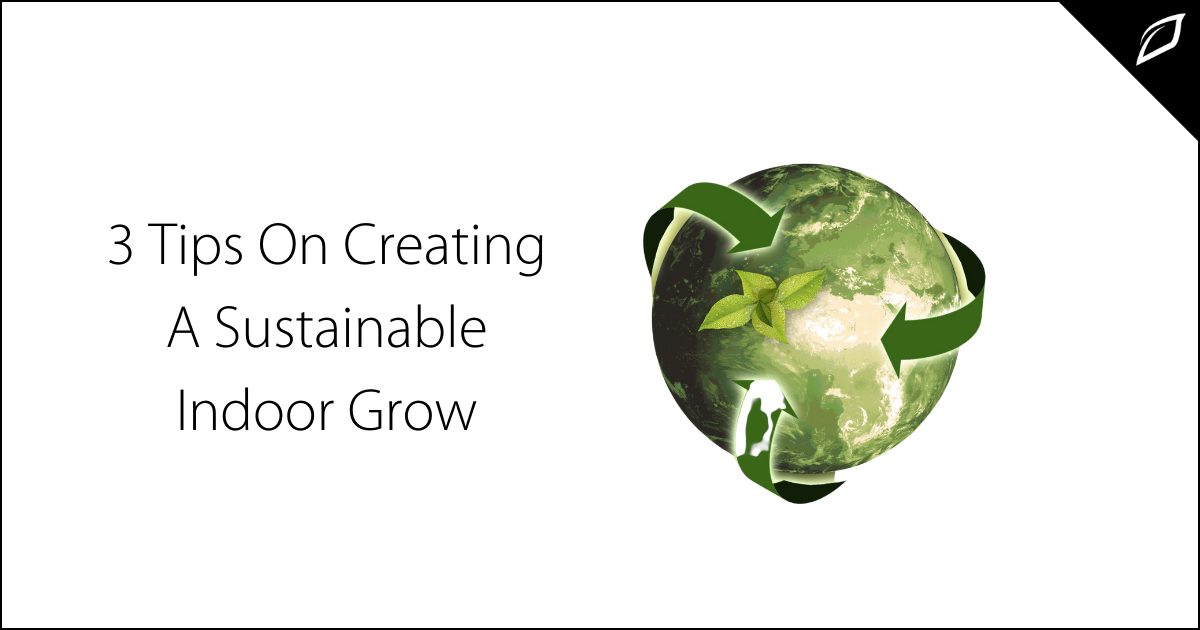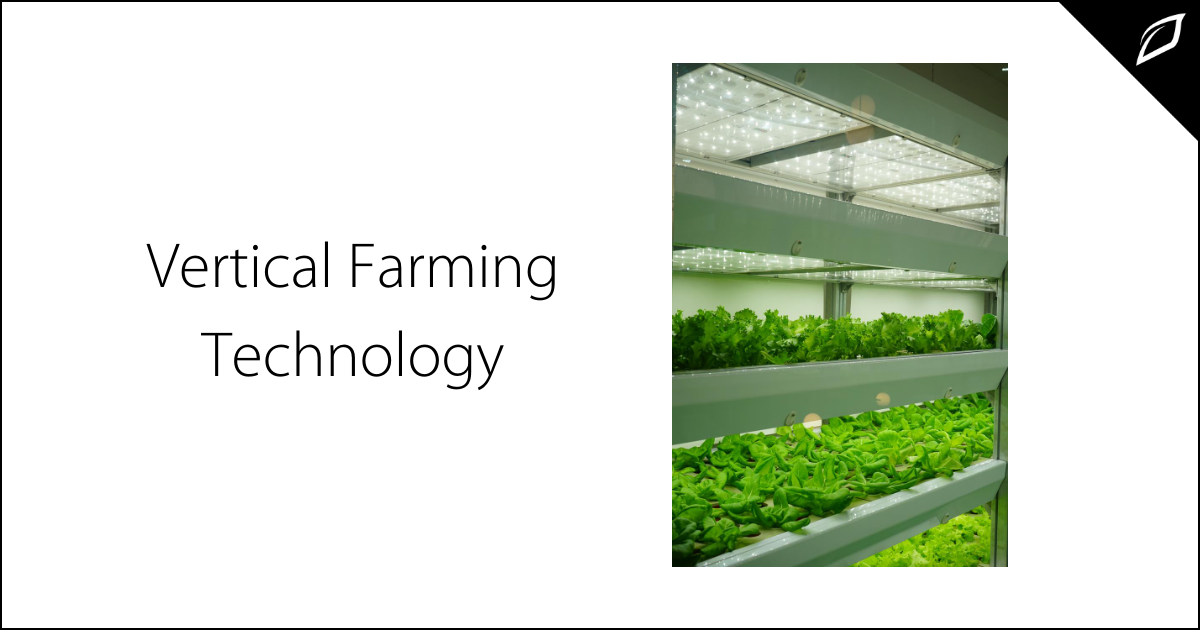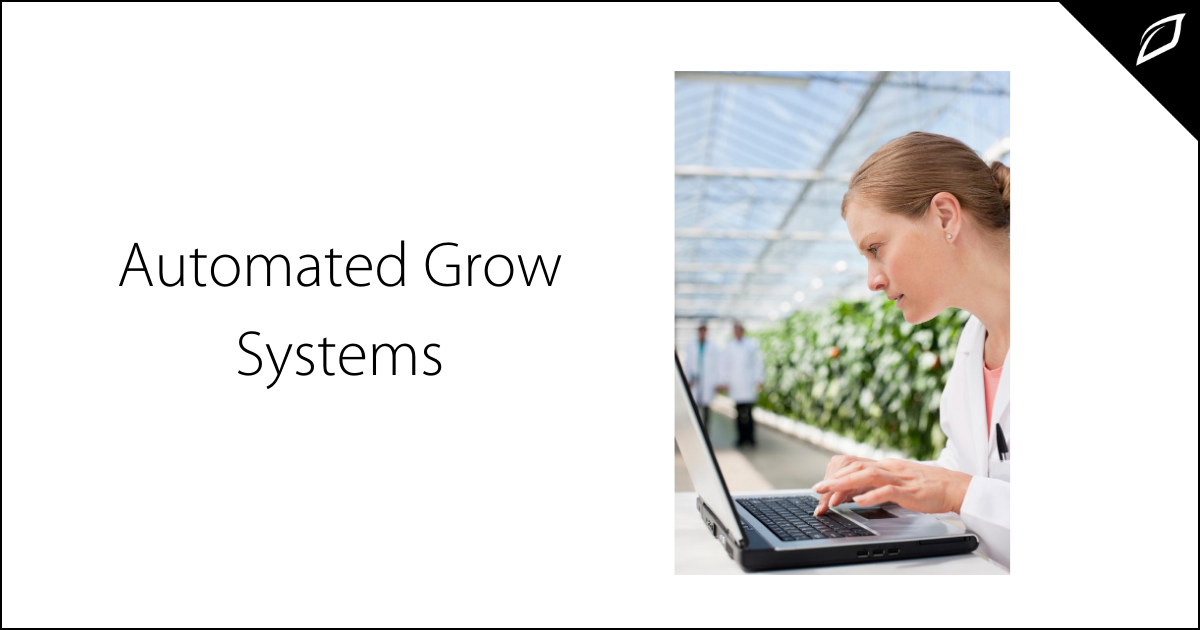Customer Highlight - Dr. Robb Farms
Dr. Robert Flannery is the first Ph.D. in the United States with certified technical expertise in growing commercial cannabis. He earned his...
2 min read
Joy King : Oct 9, 2020 9:30:56 AM

Indoor cannabis grow operations have become the industry standard by providing privacy and an environmentally controlled growing space. These indoor grow facilities have a few downsides that you need to consider when creating a sustainable grow operation.
Artificial lighting requires substantial energy use, limited space can be challenging, and equipment used for climate control automation is an investment that requires regular maintenance. However, if you use all of your automation equipment as intended, you can save money on your energy bill.
Alternative Energy
According to Electricity Plans, indoor cannabis growers now use about 1% of all energy consumed in the US. For a grower, that's roughly 9% of the total retail price of one pound of sellable product, a significant number. There are plenty of energy options available on the market today. Most have upfront costs, but if dedication to creating a sustainable growing environment is important to you, it's money well spent. Tesla Power Walls, solar panels, wind turbines, hydro-power, and hybrid systems that combine solar and wind are just a few options for alternative energy solutions. Of course, every grow room is different, so each option will require some investigation to see what matches your goals.
Vertical Growing
According to Wikipedia, vertical farming is "the practice of growing crops in vertically stacked layers." Vertical farming produces more cannabis with less land and water resources than traditional farming practices by using resources more efficiently than greenhouses and conventional agricultural methods. Another benefit in vertical, indoor growing is that farmers can grow crops all year, regardless of harsh weather conditions.
Once dialed in, your vertical farm will increase your crop yields while using fewer resources, not just on energy, but also expensive fertilizers.
Automation
Indoor grow room automation assists companies to operate profitably while using energy as efficiently as possible. Traditional farming requires labor-intensive tasks that dominate daily activities. Advantages commonly attributed to automation include higher production rates and increased productivity, more efficient use of materials, better product quality, improved safety, shorter workweeks for labor, and reduced lead times.
Case Study in Sustainability
From their humble beginnings to producing 4000 pounds of flower per month, Dr. Robb from Dr. Robb's Farm is committed to producing only the highest quality cannabis available on the market today. Not only is Dr. Robb committed to creating quality pesticide-free cannabis, but his sustainability initiatives are impressive by anyone's standards. They set the bar high: from renewable energy use to condensation and water collection to Rockwool recycling programs; his team leads by example. "Sustainability and efficiency are synonymous in agriculture. The Growlink system user interface is the best I have found. It gives me the freedom to use the equipment the way I see fit." - Dr. Robb


Dr. Robert Flannery is the first Ph.D. in the United States with certified technical expertise in growing commercial cannabis. He earned his...

What is vertical farming? According to Wikipedia, vertical farming is "the practice of growing crops in vertically stacked layers. It often...

Increase yields and save valuable resources Automated grow systems have been used for many years to keep labor costs down. Whether it's lighting,...